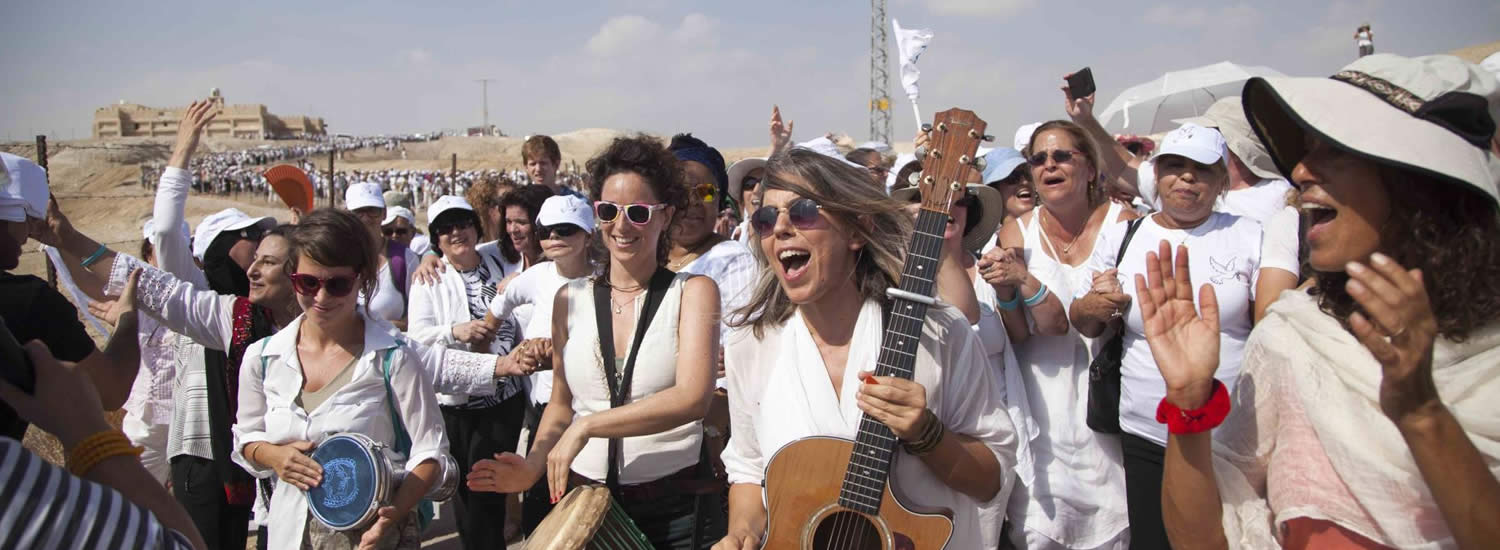
Women Wage Peace is the largest grassroots peace movement in Israel.
Women’s Right to Vote in Israel and Palestine
Women’s Day / May 15, (1948)
IL
Women’s Right to Vote in Israel and Palestine: A Complex History
Women in Israel gained the right to vote on May 14, 1948, the day the State of Israel was established. However, the story of women’s suffrage in this region began decades earlier during the British Mandate period, reflecting a complex interplay of cultural, religious, and political factors that continue to influence women’s political participation in both Israel and Palestine today.
Women’s Suffrage in Pre-State Israel
The first electoral process in which Jewish women participated in Palestine was on April 19, 1920, during elections for the Assembly of Representatives (Asefat HaNivharim) of the Yishuv, the Jewish community in British Mandatory Palestine. This made the Yishuv one of the first societies in the Middle East to grant women’s suffrage.
The achievement came after significant struggle. In 1918, when the first Assembly of Representatives was being organized, religious parties opposed women’s participation. Women’s rights advocates, led by the Women’s Equal Rights Association, responded with protests and threatened to establish separate women’s institutions, if excluded from the political process.
Key Figures in the Early Suffrage Movement
Sarah Thon (1880-1961)
A founder of the Women Workers’ Movement, Thon advocated tirelessly for women’s suffrage and broader rights for women laborers within the Yishuv community.
Rosa Welt-Straus (1856-1938)
As the first president of the Union of Hebrew Women for Equal Rights in Eretz Israel, Welt-Straus led efforts to secure voting rights, bringing her experience from the American suffrage movement to Palestine.
Henrietta Szold (1860-1945)
Though better known as the founder of Hadassah, Szold was a vocal supporter of women’s political rights in the Yishuv and helped bridge American and Palestinian Jewish feminist movements.
Rachel Yanait Ben-Zvi (1886-1979)
An educator and political activist, she worked to advance women’s education and political participation, later becoming the wife of Israel’s second president.
Establishment of the State of Israel
When Israel declared independence on May 14, 1948, women’s equal political rights were enshrined in the Declaration of Independence, which stated: “The State of Israel will maintain equal social and political rights for all citizens, regardless of religion, race, or gender.”
The first Israeli election was held on January 25, 1949, with universal suffrage for all citizens—women and men—aged 18 and older. In this founding election, 11 women were elected to the first Knesset, representing about 9% of the 120-member body.
Women’s Political Rights in Palestinian Society
The story of women’s suffrage in Palestinian communities followed a different trajectory, influenced by Ottoman rule, British Mandate policies, and subsequent governance under various authorities.
British Mandate Period (1920-1948)
During the British Mandate, Palestinian Arab women did technically have the right to vote under British electoral law, but most electoral processes were boycotted by the Arab leadership, limiting practical participation.
Women’s Movements and Activism
Palestinian women’s activism during this period focused primarily on nationalist causes alongside women’s rights. Organizations like the Arab Women’s Association, formed in Jerusalem in 1929, combined social welfare work with political advocacy.
Key figures included:
Melia Sakakini
A prominent educator who established girls’ schools and advocated for women’s education as a path to political empowerment.
Zulaykha al-Shihabi
Founded the Arab Women’s Union in 1921, which combined charitable work with advocacy for women’s broader social and political rights.
Post-1948 Developments in Palestinian Territories
Following 1948, the political status of Palestinians was fragmented, with women’s rights developing differently
under various administrations:
- In Gaza (under Egyptian administration 1948-1967), women did not have voting rights.
- In the West Bank (under Jordanian rule 1948-1967), women gained the right to vote in 1955, but didn’t exercise it until 1967 due to limited elections.
- Under Israeli military rule (1967-1993), Palestinians did not participate in national elections.
Palestinian Authority Era
After the Oslo Accords and the establishment of the Palestinian Authority (PA), Palestinian women gained more formal political rights:
- The 1996 Palestinian elections allowed universal suffrage for women and men over 18.
- The 2003 Amended Basic Law explicitly guarantees political rights regardless of gender.
- The 2005 Electoral Law established a quota system requiring a minimum number of women on party lists.
Contemporary Issues
In contemporary Israel, women’s formal political rights are secure, though representation remains imperfect. As of recent elections, women comprise approximately 25-30% of the Knesset.
In Palestinian territories, women’s formal political rights exist but face practical challenges:
- The Legislative Council has been inactive since 2007 due to the Hamas-Fatah split, limiting all Palestinians’ political expression through elections.
- Local elections have occurred intermittently, with women’s participation varying by region.
- Women’s representation in the Palestinian Legislative Council reached 12.9% in 2006 through the quota system.
Women’s Right to Vote in Israel and Palestine
The history of women’s suffrage in Israel and Palestine reflects the region’s complex political landscape. While Israeli women gained formal political equality with the state’s founding on May 14, 1948, building on earlier achievements during the Mandate period, Palestinian women’s political rights developed along a different timeline shaped by changing governance structures and ongoing political challenges.
Both societies continue to work toward translating formal voting rights into meaningful political representation and influence. The struggle for women’s full political participation remains an ongoing process, influenced by cultural traditions, religious interpretations, and the broader political conflicts that have defined the region’s history.
The Emergence of the Palestinian Women’s Movement, 1929-39
In 1929, Palestinian women inaugurated their involvement in organized political activism with the founding of a women’s movement. This article examines the first ten years of that movement, highlighting its contradictions, strategies, and achievements against the back- ground of mounting political conflict and the Arab Revolt. Arguing that the movement, though not “feminist” in the contemporary sense, had a pronounced gender consciousness, the author shows how the women’s implicit critique of gender norms constituted a major element in their oppositional strategies and tactics.
> palestine-studies.org/en/node/40801

